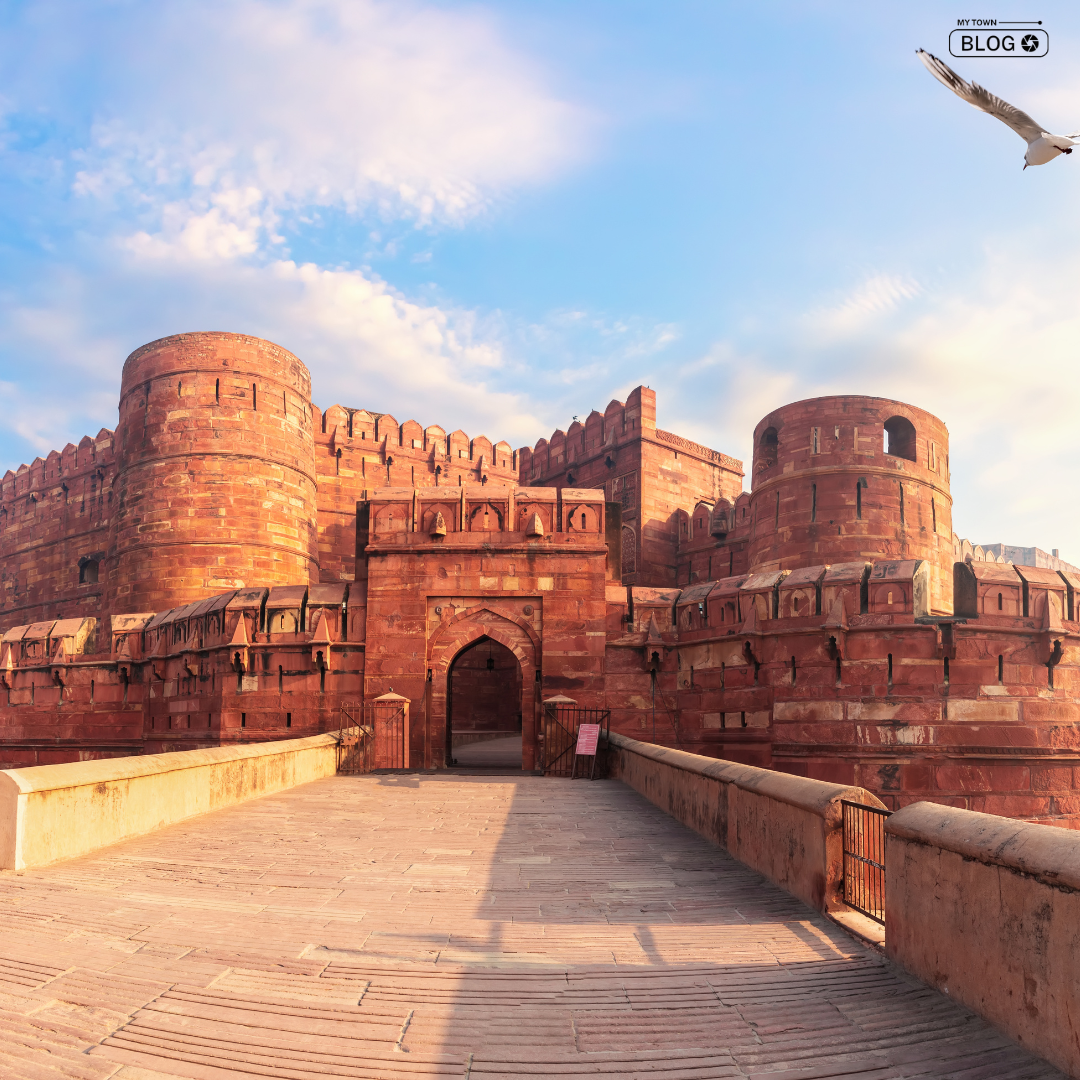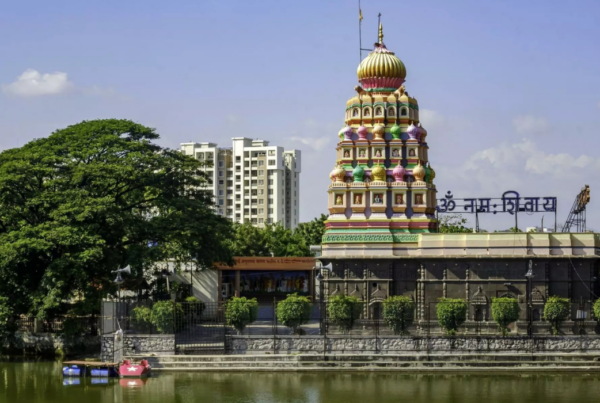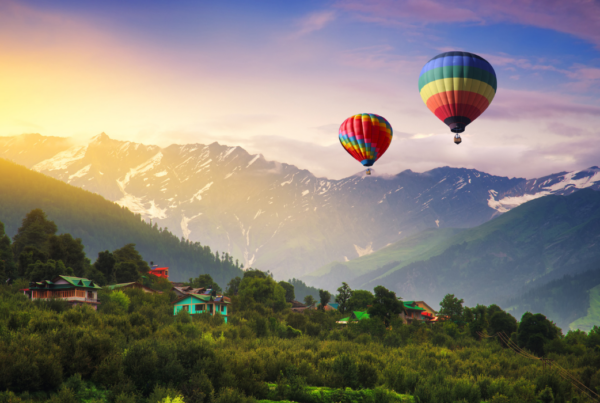Agra’s Unforgettable Getaway Beyond the Taj Mahal, Explore the Rich Tapestry of Historical Marvels. Agra, globally acclaimed as the residence of the iconic Taj Mahal, has much more to offer beyond this architectural masterpiece. Agra’s Unforgettable Getaway is a treasure trove of historical marvels and a testament to a rich cultural heritage. Situated along the banks of the River Yamuna, Agra served as the capital of the Mughal Empire, leaving behind a legacy of captivating structures that continue to enchant visitors. While the Taj Mahal remains the crown jewel, Agra boasts many other attractions that glimpse its Mughal past and offer a deeper understanding of its historical significance. The city attracts tourists year-round, with the ideal time for a visit being from November to March when the weather is pleasant, creating perfect conditions for sightseeing.
Taj Mahal
Undoubtedly the most famous attraction in Agra, the Taj Mahal stands as a Mughal architectural marvel and a symbol of undying love. Built by Shah Jahan in memory of his beloved wife, Mumtaz Mahal, this white marble masterpiece is situated on the south bank of the River Yamuna. Designated as a UNESCO World Heritage Site, the Taj Mahal’s global recognition is well-deserved.
Location: Dharmapuri, Forest Colony, Tajganj, Agra, Uttar Pradesh 282001

Agra Red Fort
Formerly the Mughal residence until 1638, the Agra Fort, also known as the Red Fort, is an expansive fortress constructed with red sandstone. It is often called the walled city, located on the right bank of the River Yamuna. Significant structures like Diwan-e-Khas, Diwan-e-Aam, Khaas Mahal, Moti Masjid, and Jahangir Palace lie within its massive walls.
Location: Agra Fort, Rakabganj, Agra, Uttar Pradesh 282003
Fatehpur Sikri
Once the capital of the Mughal Empire, Fatehpur Sikri is a breathtaking blend of Persian, Indian, and Islamic architectural styles. Constructed in honor of Mughal Emperor Akbar’s victory, this red sandstone city holds UNESCO World Heritage Site status and is a unique testament to architectural brilliance.
Location: Fatehpur Sikri, Agra District, UP
Tomb of Itimad-ud-Daulah
Nur Jahan, Jahangir’s wife, commissioned this marble mausoleum, also known as the ‘Baby Taj,’ for her father, Mir Ghiyas Beg (Itimad-Ud-Daulah). The mausoleum showcases the intricate Indo-Islamic architectural style through semi-precious stones, detailed carvings, ornate arches, and stunning artwork.
Location: Moti Bagh, Agra, Uttar Pradesh, 282006
Mehtab Bagh
Positioned north of the Taj Mahal along the River Yamuna, Mehtab Bagh offers a symmetrical view of the iconic monument, particularly during sunrise and sunset. A haven for photographers, this lush green garden provides a picturesque backdrop for capturing the beauty of the Taj Mahal.
Location: 1, MEHTAB BAGH, Nagla Devjit, Agra, Uttar Pradesh 282001
Jama Masjid
Ranking among the largest mosques in India, Jama Masjid sits opposite the Red Fort. Constructed by Shah Jahan, it features a unique blend of red sandstone and white marble. The mosque’s intricate design, lofty domes, golden inscriptions, and detailed inlay work make it a captivating destination.
Location: Jama Masjid, Subash Bazar, Kinari Bazar, Hing ki Mandi, Mantola, Agra, Uttar Pradesh 282003
Akbar’s Tomb
Commissioned by Akbar and completed by Jahangir in 1613, this tomb showcases stunning red sandstone and marble designs. Recognized as a masterpiece of Mughal architecture, it is adorned with inlaid panels, floral and calligraphic designs, intricate carvings, and detailed ceiling designs.
Location: Tomb of Akbar The Great Area, Sikandra, Agra, Uttar Pradesh 282007
Chini Ka Rauza
Dedicated to the Prime Minister of Mughal Emperor Shah Jahan, Allama Afzal Khan Mullah, this mausoleum is known for its glazed tile work, Chini. Built between 1628 and 1639, it stands on the bank of the River Yamuna and exemplifies a splendid blend of Indo-Persian architectural styles.
Location: Katra Wazir Khan, Agra, Uttar Pradesh, 282006

Conclusion
Embark on Agra’s Unforgettable Getaway, where history and architectural marvels converge to offer travelers a truly mesmerizing experience. From the timeless beauty of the Taj Mahal to the grandeur of the Agra Fort and the cultural richness of Fatehpur Sikri, the city unfolds the opulence and significance of the Mughal era. Immerse yourself in the intricate details of the Tomb of Itimad-ud-Daulah and capture the symmetrical beauty of Mehtab Bagh. Agra’s attractions, woven into the fabric of history and Indo-Persian architecture, create an enduring tapestry of memories. Let the resonance of history linger as you explore the heritage, embrace the beauty, and lose yourself in the enchantment of a city that echoes with tales of a bygone era.
FAQs
What is the best time to visit Agra?
The best time to visit Agra is from November to March when the weather is pleasant and ideal for sightseeing. During these months, you can explore the attractions comfortably without being hindered by extreme temperatures.
Is the Taj Mahal the only attraction in Agra?
While the Taj Mahal is the most famous attraction, Agra boasts several other significant landmarks. The Agra Fort, Fatehpur Sikri, Tomb of Itimad-ud-Daulah, Mehtab Bagh, Jama Masjid, Akbar’s Tomb, and Chini Ka Rauza are noteworthy places to visit.
Are there any entry fees for these attractions?
Yes, most of the major attractions in Agra have entry fees. The fees may vary for Indian and foreign tourists. It’s advisable to check the official websites or local guides for the latest information on entry fees.
How much time should I allocate for Agra sightseeing?
Agra’s sightseeing can be comfortably covered in 2 to 3 days, allowing you to explore the significant attractions leisurely. This time frame ensures you have ample time to appreciate each site’s historical significance and architectural beauty.
Are there guided tours available in Agra?
Yes, guided tours are available for Agra’s major attractions, providing insightful information about the history and significance of each site. Many tourists find guided tours helpful in enhancing their overall experience and understanding of Agra’s cultural heritage.
What are the recommended photography spots in Agra?
Mehtab Bagh, with its symmetrical view of the Taj Mahal during sunrise and sunset, is a highly recommended photography spot. The Agra Fort and various vantage points around the Taj Mahal offer stunning perspectives for capturing the city’s architectural beauty.
Can I visit Agra as a day trip from Delhi?
Agra is easily accessible from Delhi, and day trips are everyday. However, to fully appreciate the city’s attractions, consider spending at least one night exploring the landmarks more relaxedly.
Is it necessary to book tickets for the Taj Mahal in advance?
During peak tourist seasons, booking tickets for the Taj Mahal in advance is advisable to avoid long queues. Online booking options are available, ensuring a smoother entry process.








